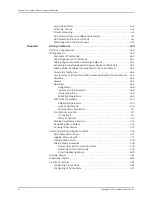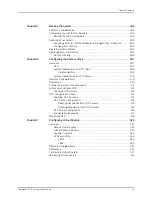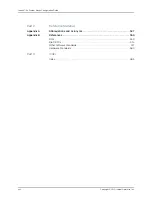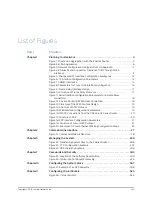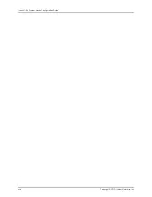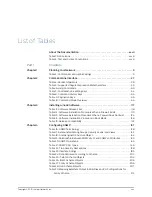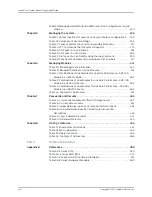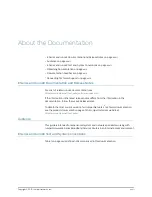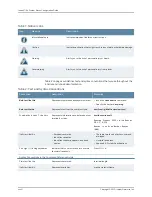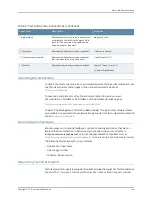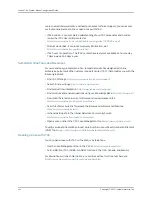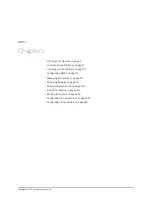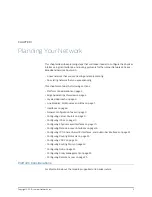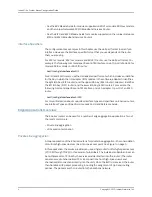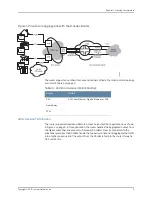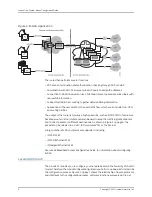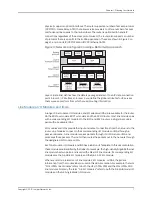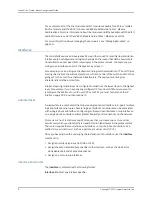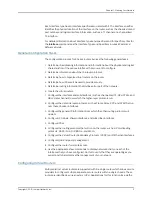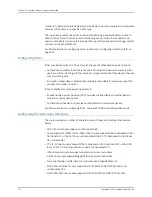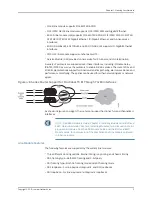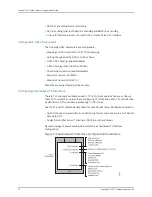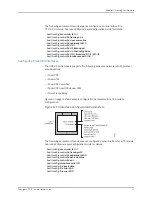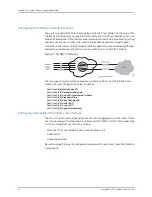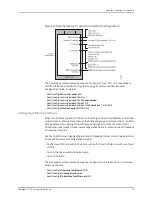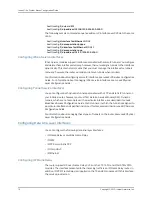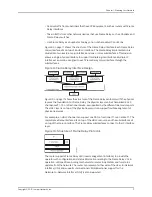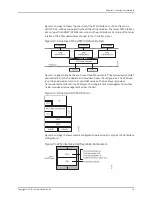
•
See the
ERX Module Guide
for modules supported on ERX7xx models, ERX14xx models,
and the Juniper Networks ERX310 Broadband Services Router.
•
See the
E120 and E320 Module Guide
for modules supported on the Juniper Networks
E120 and E320 Broadband Services Routers.
Interface Specifiers
The configuration task examples in this chapter use the
slot
/
port
format to specify an
interface. However, the interface specifier format that you use depends on the router
that you are using.
For ERX7xx models, ERX14xx models, and ERX310 router, use the
slot
/
port
format. For
example, the following command specifies an ATM interface on slot 0, port 1 of an ERX7xx
model, ERX14xx model, or ERX310 router.
host1(config)#
interface atm 0/1
For E120 and E320 routers, use the
slot
/
adapter
/
port
format, which includes an identifier
for the bay in which the I/O adapter (IOA) resides. In the software, adapter 0 identifies
the right IOA bay (E120 router) and the upper IOA bay (E320 router); adapter 1 identifies
the left IOA bay (E120 router) and the lower IOA bay (E320 router). For example, the
following command specifies an ATM interface on slot 5, adapter 0, port 0 of an E320
router.
host1(config)#
interface atm 5/0/0
For more information about supported interface types and specifiers on E Series routers,
see Interface Types and Specifiers in
JunosE Command Reference Guide
.
Edge Applications Overview
The E Series router can be used for a number of edge aggregation applications. Two of
the most common are:
•
Private line aggregation
•
xDSL session termination
Private Line Aggregation
A major application of the E Series router is for private line aggregation—the consolidation
of multiple high-speed access lines into one access point. See Figure 1 on page 5.
In this application, the service provider can use a single router to offer high-speed access
(FT1/FE1 through T3/E3) to thousands of subscribers. The individual subscriber lines can
be multiplexed into T3 lines by the service provider and fed into the router. (The router
can also accept unchannelized T3 or E3 connections from high-speed users and
channelized E1 connections directly into the unit.) Once the traffic is received, the router
then handles all IP packet processing, including the assignment of QoS and routing
policies. The packets are then routed into the backbone network.
Copyright © 2010, Juniper Networks, Inc.
4
JunosE 11.3.x System Basics Configuration Guide
Summary of Contents for JUNOSE 11.3
Page 6: ...Copyright 2010 Juniper Networks Inc vi...
Page 8: ...Copyright 2010 Juniper Networks Inc viii JunosE 11 3 x System Basics Configuration Guide...
Page 24: ...Copyright 2010 Juniper Networks Inc xxiv JunosE 11 3 x System Basics Configuration Guide...
Page 32: ...Copyright 2010 Juniper Networks Inc 2 JunosE 11 3 x System Basics Configuration Guide...
Page 146: ...Copyright 2010 Juniper Networks Inc 116 JunosE 11 3 x System Basics Configuration Guide...
Page 166: ...Copyright 2010 Juniper Networks Inc 136 JunosE 11 3 x System Basics Configuration Guide...
Page 432: ...Copyright 2010 Juniper Networks Inc 402 JunosE 11 3 x System Basics Configuration Guide...
Page 488: ...Copyright 2010 Juniper Networks Inc 458 JunosE 11 3 x System Basics Configuration Guide...
Page 524: ...Copyright 2010 Juniper Networks Inc 494 JunosE 11 3 x System Basics Configuration Guide...
Page 554: ...Copyright 2010 Juniper Networks Inc 524 JunosE 11 3 x System Basics Configuration Guide...
Page 566: ...Copyright 2010 Juniper Networks Inc 536 JunosE 11 3 x System Basics Configuration Guide...
Page 588: ...Copyright 2010 Juniper Networks Inc 558 JunosE 11 3 x System Basics Configuration Guide...
Page 613: ...PART 3 Index Index on page 585 583 Copyright 2010 Juniper Networks Inc...
Page 614: ...Copyright 2010 Juniper Networks Inc 584 JunosE 11 3 x System Basics Configuration Guide...
Page 632: ...Copyright 2010 Juniper Networks Inc 602 JunosE 11 3 x System Basics Configuration Guide...

